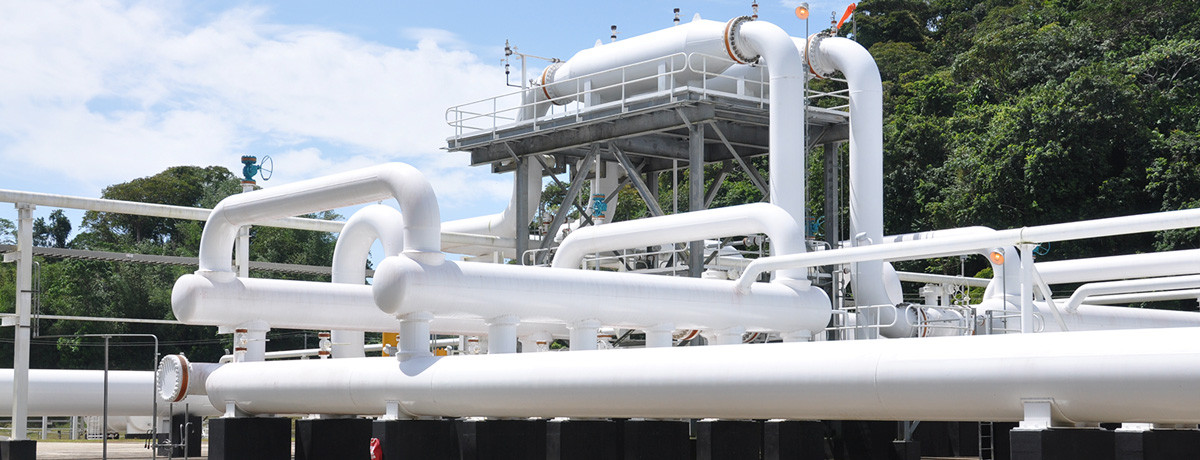
Installations
Our installations in Trinidad and Tobago.
Sub Sections Of "Installations"
NGC’s Beachfield Operations
NGC’s Operations at the Beachfield Installation.
Visit Page »Tobago Natural Gas Receiving Facility
Celebrating the first Natural Gas onshore Gas Receiving Facility in Tobago.
Visit Page »
NGC as Aggregator
As an aggregator of natural gas, NGC has had to be technically ready and efficient at receiving, gathering or collecting almost all the natural gas produced offshore the southeast coast from a variety of suppliers. Natural gas, upon reaching landfall, must have its pressures regulated. Any liquids, sand, or other impurities removed before the gas flow is routed to various destinations around the country at a pressure and in a state that meets the requirements of the consumer utilizing the gas as feedstock or fuel. The Company has been keenly aware that any failures here would fail to satisfy contractual obligations for gas transport and gas quality, which could result in penalties and financial liabilities.
NGC and the southeast coast of Trinidad
NGC has honed its ability to competently undertake the aggregation of large volumes of natural gas through its consistent expansion works. Over a number of years several pipeline features have enabled the Company to meet and even surpass international standards of gas provision.
For example, building on existing facilities in Galeota and Mayaro, NGC established an underground slug catcher at Abyssinia in 1983 to collect 1,500 barrels of condensate (slugs of gasoline) from the natural gas stream. There was also a vertical separator to remove entrained liquids from the natural gas. The other facilities in the adjoining areas at Galeota also had a Slug Catcher and 24-inch pig launcher. At Mayaro there was a regulator station to control offshore gas pressures to below 800 psi. Another location, known as Beachfield, (an area in-land of the mentioned sites) contained the 30-inch and 36-inch pig launchers and 24-inch pig launcher and receiver. These launchers and receivers were necessary devices used to launch and receive the ‘pig’ or torpedo-shaped tool of various diameters and lengths used to clean or scrape the insides of pipes of various diameters.
Between 1983 and 1987, a contractor managed NGC’s aggregator operations in the southeast coast. By 1988, permanent staff was recruited by NGC to operate the facilities, including the Mayaro regulator station. By the end of the decade and the early 1990s, a series of upgrades and maintenance works were undertaken. Due to continued growth in the natural gas sector, new customer connections were forged and gas sales increased from approximately 343 MMscf/d in 1983 to 489 MMscf/d in 1991 – a 30% increase.
PPGPL’s establishment in 1991 also impacted positively on the industry by requiring greater monitoring from NGC’s end. PPGPL required consistent quality from NGC to supply dry and completely liquids-free gas before reaching the large customers located mainly on the Point Lisas Industrial Estate.